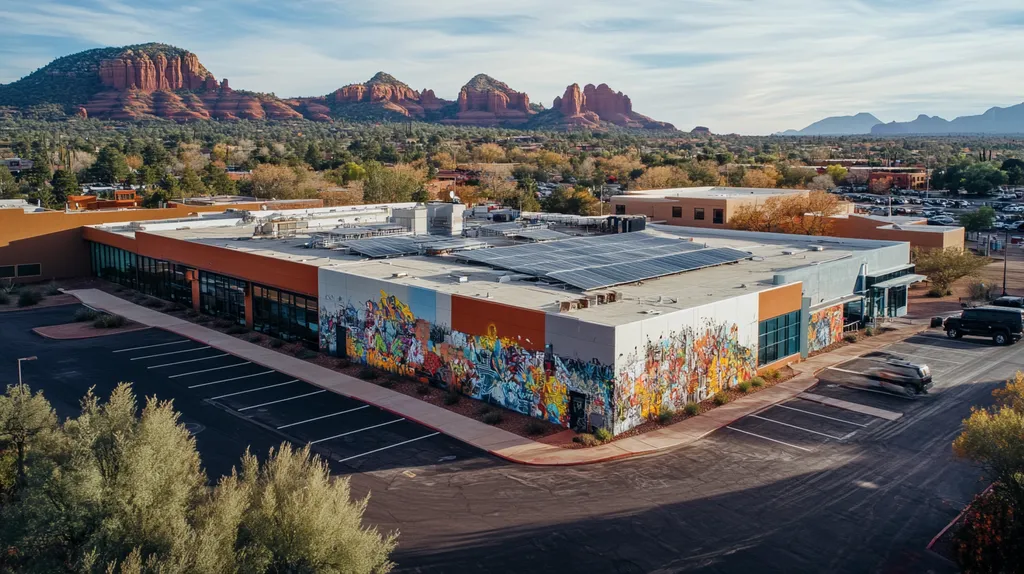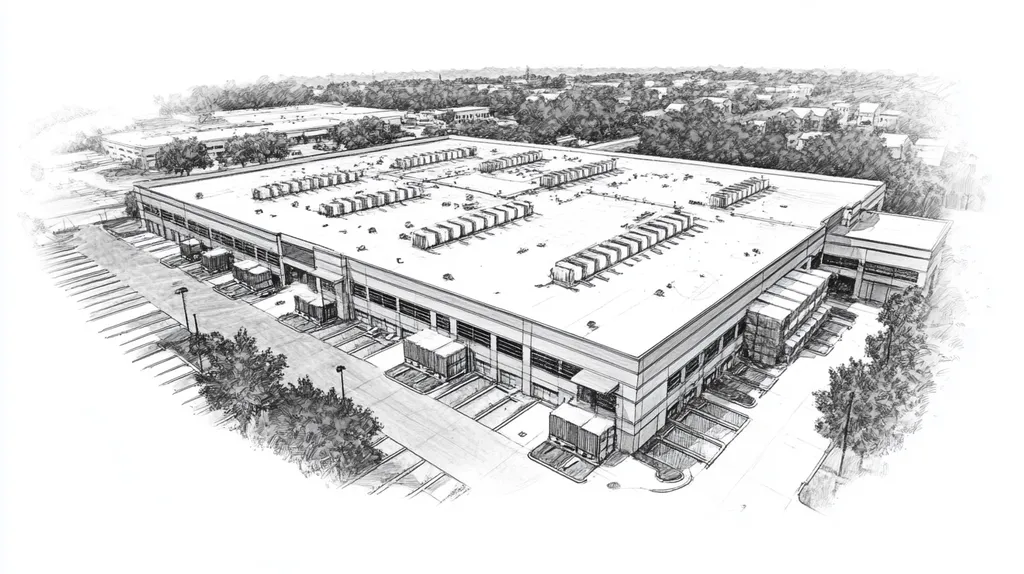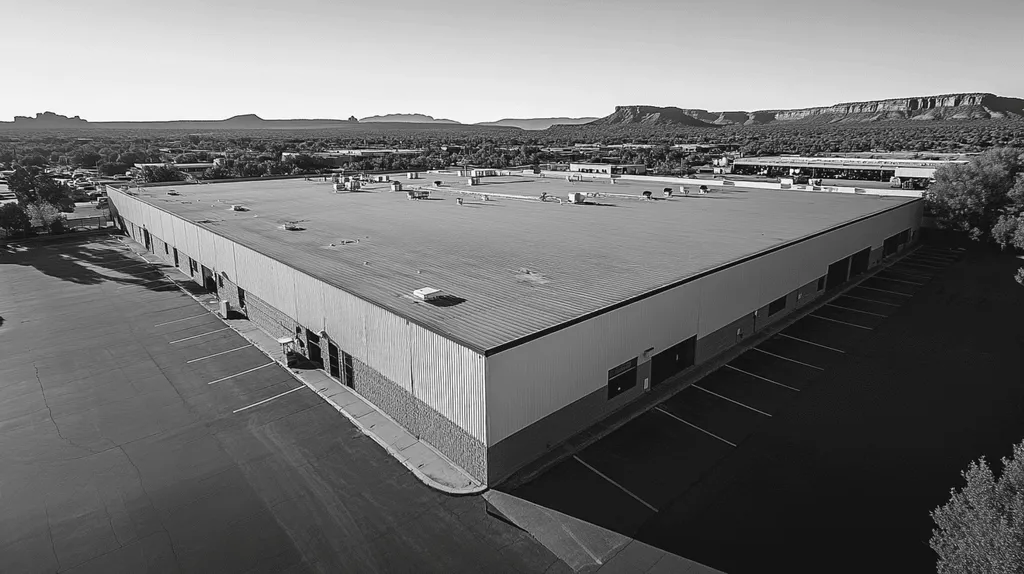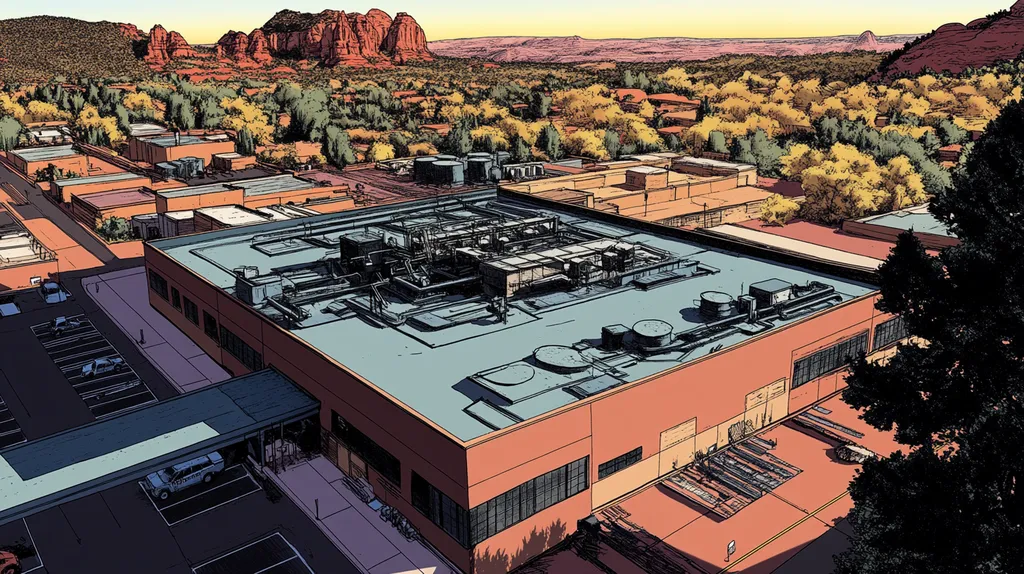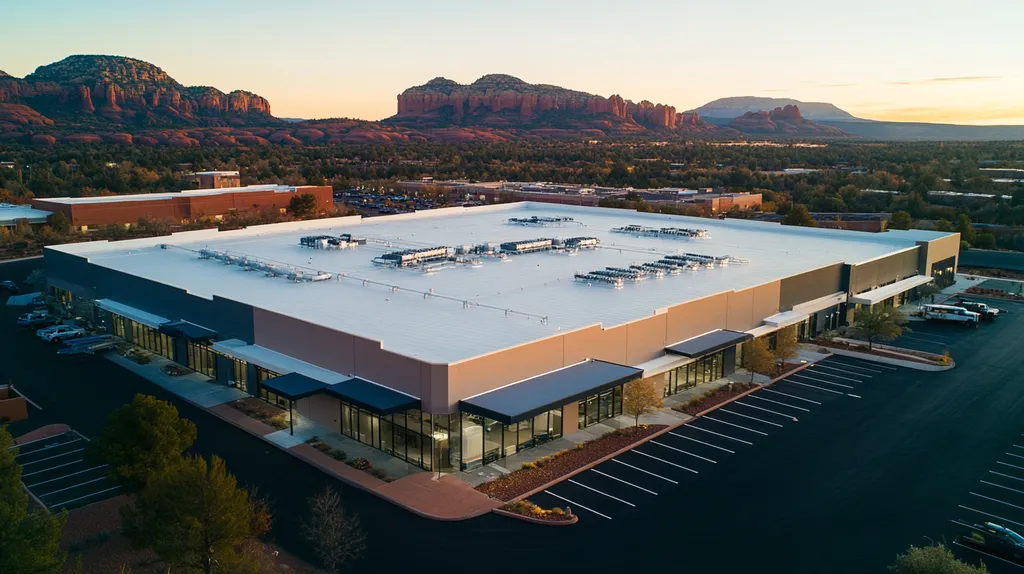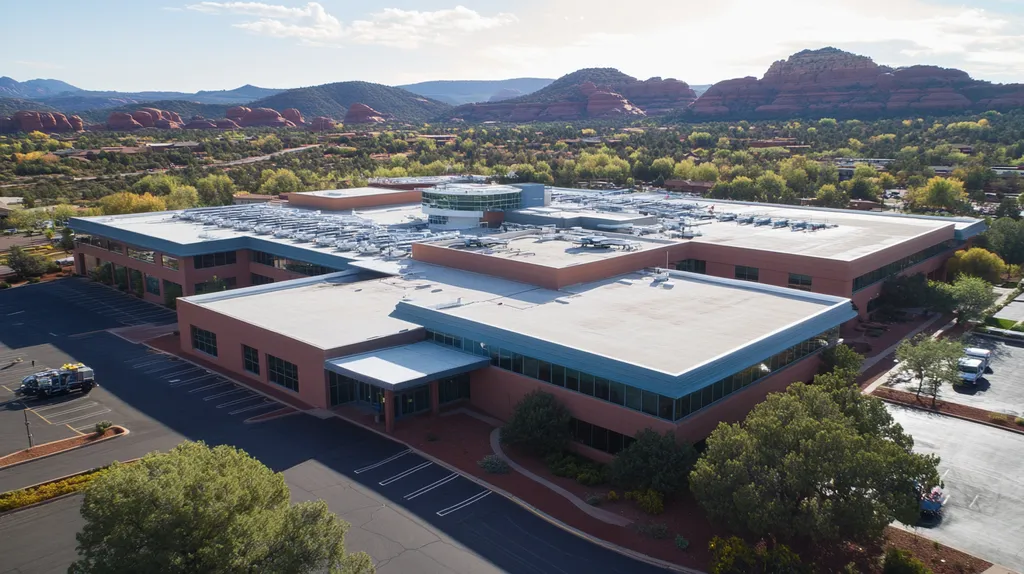With commercial energy costs rising by up to 20% annually, facility managers face mounting pressure to reduce operating expenses. Studies show that reflective commercial roofs can slash cooling costs by 15-30% while extending HVAC equipment life.
Yet implementing these solutions requires careful consideration of performance metrics, financial factors, and compliance requirements. Getting it wrong can lead to costly repairs and missed energy savings.
This comprehensive guide provides facility managers with actionable strategies for optimizing reflective commercial roofs, from material selection to long-term maintenance protocols that maximize both efficiency and ROI.
SECTION 1: PERFORMANCE FACTORS
The performance of reflective commercial roofs is crucial for managing both energy costs and indoor comfort. With energy prices constantly climbing, property owners feel the urgency to find effective solutions that can help mitigate these expenses. The U.S. Department of Energy reports that reflective roofing can cut cooling costs by as much as 20%. This section delves into essential performance factors, examining solar reflectance, insulation quality, and their significant impacts on indoor environments.
Solar Reflectance and Thermal Emittance Measurement
Solar reflectance indicates a roof’s ability to bounce back sunlight, while thermal emittance measures how efficiently it can release the heat it absorbs. Both characteristics are vital for effective rooftop temperature management. A roof with high solar reflectance stays cooler, which directly translates to lower energy demands for air conditioning.
Various roofing materials portray considerable differences in reflectance and emittance values. For instance, a white TPO membrane can achieve a remarkable reflectance value of over 0.85, compared to darker materials that can reflect significantly less. This disparity is a crucial aspect of energy efficiency.
Seasonal variations further influence these measurements. In summer, a reflective roof’s capacity to lower rooftop temperatures can reduce energy consumption dramatically, at times by nearly 50 degrees Fahrenheit when compared to darker roofing options.
Regular evaluations using standardized measurement methods are essential to maintain the expected performance of roofs. Facility managers should prioritize selecting materials that have received testing and ratings based on established standards for solar reflectance and thermal emittance.
Key Action Items
Insulation and Roof Deck Condition Assessment
The quality of insulation and the health of the roof deck play a pivotal role in overall roof performance. Inadequate insulation can cause both heat loss in winter and heat gain during summer, undermining all the advantages of a reflective roof. A comprehensive inspection of insulation materials, along with their installation integrity, can uncover critical deficiencies.
Facility managers should closely evaluate the R-value of insulation throughout the roof system. A low R-value might necessitate upgrading insulation to enhance energy efficiency. If insulation has deteriorated, the benefits of a reflective roof may be significantly diminished.
Equally important is the condition of the roof deck. Issues such as leaks or degradation can facilitate unwanted heat transfer, which harms the building’s overall energy dynamics. Any visible signs of wear should prompt prompt action.
Engaging qualified professionals for routine assessments ensures both the insulation and structural integrity are preserved. This proactive measure not only mitigates risks but also fosters improved energy efficiency and comfort.
Key Action Items
Impact on Indoor Temperature and Comfort Levels
Reflective roofs are instrumental in enhancing indoor temperature stability and overall comfort. By reducing heat absorption, these roofs create a more regulated internal climate, which is crucial for facilities housing sensitive equipment or personnel.
Studies indicate that buildings with reflective roofs often experience fewer fluctuations in temperature, resulting in greater satisfaction among occupants. In settings like warehouses, this translates to improved working conditions and heightened productivity.
Additionally, mitigating temperature extremes positively impacts HVAC system longevity, lowering repair and replacement expenses. Recognizing how temperature regulation influences the overall functionality of the building is essential.
Facility managers should consistently monitor indoor temperatures in relation to outdoor conditions, clearly demonstrating the effectiveness of their investment in reflective roofing. This ongoing assessment facilitates timely adjustments to enhance energy management further.
Key Action Items
SECTION 2: FINANCIAL CONSIDERATIONS
The financial impact of installing a reflective commercial roof is significant and worth careful consideration. As energy costs continue to climb, facility managers must identify roofing options that not only slash long-term operational expenses but also contribute to overall sustainability. Reflective roofs have proven their ability to greatly reduce cooling loads, translating into substantial HVAC savings. A clear understanding of both the initial investment and the longer-term financial advantages associated with these roofs is vital for making informed choices.
Initial Investment and Cost-Benefit Analysis
The upfront investment in a reflective commercial roof may seem intimidating at first glance, but conducting a thorough cost-benefit analysis reveals its true value over time. While the initial expenses can vary depending on roofing material and installation size, the long-term savings typically outweigh these costs by a wide margin.
Modern reflective roofing systems often boast a longer lifespan, which can significantly cut down on replacement frequency. It’s essential to consider durability and maintenance costs when comparing these options to traditional roofing materials.
Additionally, various incentives and rebates from local governments or utility companies can help alleviate installation costs. Exploring financing opportunities can further ease the financial strain on facility budgets.
Key Action Items
HVAC Energy Savings and Payback Period
The energy savings linked to reflective roofs can be impressive, directly enhancing HVAC efficiency. Reflective surfaces minimize heat absorption, consequently lowering cooling requirements during the warm summer months.
Facilities can generally expect a 20% to 30% decrease in cooling energy consumption with the installation of a reflective roof. This reduction not only improves comfort levels but also results in notable cost savings on energy bills.
Moreover, the payback period for these roofs is often quick, frequently allowing organizations to recover their investment within 5 to 10 years through lower energy costs. It is important to also factor in existing HVAC system efficiency and the local climate when making these calculations.
Key Action Items
Return on Investment and Lifecycle Cost Comparison
The return on investment (ROI) for reflective commercial roofs is notably favorable, especially when contrasted with traditional roofing options. Lower energy expenses, diminished maintenance needs, and increased roof lifespan contribute to this advantage.
Investing in a reflective roof can lead to a net positive cash flow from the outset, enhancing the overall financial performance of the facility. Analyzing lifecycle costs, including ongoing maintenance and replacement timelines, further underscores the long-term savings that reflective roofs can provide.
Additionally, by reducing stress on HVAC systems, organizations could see a drop in repair costs and an extended lifespan for their equipment. This comprehensive understanding of ROI reinforces the choice of reflective roofing as a strategic investment in both energy efficiency and economic sense.
Key Action Items
SECTION 3: COMPLIANCE REQUIREMENTS
In today’s regulatory landscape, ensuring compliance with energy codes presents a vital responsibility for facility managers. The stakes are high: falling short can lead to hefty fines and rising operational costs. For reflective commercial roofs, adhering to local and state energy codes not only boosts energy efficiency but also ensures that legal obligations are met. This section addresses the critical compliance requirements facility managers need to consider for effective roof optimization.
Local and State Energy Code Alignment
Local and state energy codes define specific standards for building materials, including roofing systems, often requiring a minimum reflectivity level for commercial roofs. These guidelines are essential to curb energy consumption effectively. For instance, California’s Title 24 implements strict requirements for reflective roofs, which aid in reducing the heat island effect while improving overall energy performance.
Ignoring these regulations can result in significant fines during inspections or the need for costly retrofits. It’s crucial for facility managers to stay updated on shifts in energy codes to prevent non-compliance penalties. Regular assessments of roofing materials based on current local standards are a necessary practice.
Compliance with these codes can also lead to financial benefits, as many states offer rebates for energy-efficient installations, including reflective roofs. Thus, adhering to energy codes should be recognized not just as a legal necessity but as a pathway to financial savings and sustainability.
Key Action Items
Sustainability Standards and Green Building Certifications
As sustainability becomes a cornerstone of modern construction, compliance with green building certifications is increasingly important. Programs like LEED (Leadership in Energy and Environmental Design) advocate for high-performance buildings, including the integration of reflective roofing materials. Gaining LEED certification can enhance a property’s appeal and lower operating expenses.
Facility managers must understand the criteria that contribute to certification, as these often include minimum reflectivity requirements. By prioritizing sustainability, they not only contribute positively to the environment but also enhance indoor comfort levels for employees and occupants.
Furthermore, adhering to these sustainability standards can create a competitive edge in attracting tenants who value eco-friendly practices. As demand for sustainable spaces continues to rise, compliance with these standards can significantly impact leasing decisions and rates.
Key Action Items
Reporting and Documentation for Regulatory Bodies
Thorough reporting and documentation are crucial for proving compliance with energy codes and sustainability standards. Facility managers should maintain detailed records of roofing materials, their reflectivity ratings, and any certifications obtained. Lacking this documentation could result in non-compliance during audits, leading to penalties.
In many areas, jurisdictions also mandate periodic energy performance reporting. By collecting and sharing this data, facility managers can highlight the benefits of their reflective roofs, demonstrating the effectiveness of their investments.
Utilizing dedicated software for tracking compliance documentation can simplify this process. Such systems can help organize necessary permits, installation records, and maintenance logs, ensuring that all compliance aspects are covered.
Key Action Items
SECTION 4: RISK MANAGEMENT
With rising energy costs, maintaining the long-term performance of reflective roofs is more crucial than ever. Facility managers face challenges like coating degradation that can undermine energy efficiency and lead to higher maintenance costs. Recognizing and addressing the risk factors associated with reflective roofing is essential to preserving the significant economic and environmental benefits they provide.
Identifying and Mitigating Reflective Coating Degradation Risks
Reflective coatings can deteriorate over time due to factors such as UV exposure, thermal cycling, and physical wear. Regular inspections are vital for spotting early signs of damage and planning timely repairs, which can ultimately extend the roof’s lifespan.
To mitigate these risks, facility managers should focus on selecting high-quality materials designed to resist environmental stressors. Prioritizing coatings with established durability records is key. Applying protective topcoats can also significantly enhance a roof’s resistance to wear and tear.
Implementing a proactive maintenance schedule that incorporates routine cleaning and inspections is essential for ensuring optimal performance. This approach minimizes costly repairs while reinforcing the energy-saving advantages of a reflective roof.
Key Action Items
Weather and Environmental Exposure Evaluation
Weather conditions like extreme temperatures, high winds, and heavy rainfall can profoundly affect a reflective roof’s lifespan. Understanding the local climate is critical for anticipating vulnerabilities. For example, facilities in hail-prone areas should utilize more robust materials to withstand impacts.
Additionally, environmental factors such as air pollution and close vegetation can accelerate coating degradation, impacting the roof’s reflective properties and overall performance. Assessing these risks enables facility managers to formulate a comprehensive maintenance strategy.
Integrating weather data and environmental assessments into the roofing strategy supports informed decision-making. Choosing reflective materials tailored for high UV exposure in sunnier regions can lead to enhanced durability.
Key Action Items
Warranty Coverage and Product Performance Guarantees
A comprehensive warranty is vital for managing risks linked to reflective roofs. Effective warranties should encompass not only material defects but also long-term performance metrics. Facility managers must closely scrutinize warranty terms to ensure adequate coverage against potential failures.
Choosing products from reputable manufacturers with a solid commitment to quality is essential. This includes seeking guarantees that specifically address risks related to reflective coatings. A robust warranty acts as a safety net, allowing facility managers to tackle potential issues without incurring significant costs.
Remaining informed about warranty requirements, including necessary maintenance procedures, is crucial. Neglecting these guidelines could void coverage and expose the facility to financial risk. Keeping detailed records of maintenance activities can also support warranty claims if needed.
Key Action Items
SECTION 5: OPERATIONAL PROCEDURES
For reflective commercial roofs to deliver their promised energy savings and enhance the building’s longevity, consistent operational procedures are essential. Proper surface preparation, regular maintenance, and timely repairs are critical; without them, even the best reflective coatings may fail. Facility managers must implement effective protocols to uphold performance and sustainability.
Surface Preparation and Coating Application Protocols
Surface preparation is crucial for ensuring optimal adhesion and long-term performance of reflective coatings. It begins with thoroughly cleaning the roof to eliminate dirt, debris, and any previous coatings, often employing pressure washing and suitable cleaning agents. This clean slate is essential for the next steps.
Inspectors should then assess the roof for damage, identifying cracks or blisters that may cause issues later. Once any surface imperfections are rectified, a compatible primer should be applied as per the manufacturer’s guidelines to promote effective adhesion.
The application of the reflective coating needs to be done under favorable weather conditions to allow for proper curing and adhesion. Adhering strictly to the manufacturer’s instructions regarding thickness and coverage ensures successful outcomes.
Key Action Items
Routine Maintenance and Inspection Schedules
Regular maintenance is vital to guarantee the longevity and efficiency of reflective roofs. Establishing a routine inspection schedule, ideally twice a year in spring and fall, allows facility managers to identify potential issues before they lead to costly repairs.
During inspections, focus on assessing the surface integrity and the condition of the reflective coating, paying special attention to areas around penetrations, seams, and flashing, which are often prone to leaks. Regular maintenance tasks such as cleaning the roof from debris and moss will help maintain its reflective properties.
Documenting all inspections and maintenance activities is essential for maintaining a reliable history that can guide future actions. Proactive maintenance allows for maximizing the energy-saving benefits of reflective roofs over their entire lifespan.
Key Action Items
Repair and Recoating Procedures for Sustained Performance
Even with diligent maintenance, some wear and tear on reflective roofs is unavoidable. Facility managers must understand the repair and recoating procedures necessary for maintaining performance over time. Promptly addressing minor issues such as small cracks or peeling edges is crucial before they escalate into larger problems.
A thorough evaluation will determine if patching is sufficient or if a complete recoating is necessary. Patching materials must be compatible with the existing coating for effective integration. For extensive areas requiring recoating, the same protocols used during the initial application should be followed.
After performing repairs or recoating, a follow-up inspection is vital to verify adherence and overall performance. Documenting all repair and recoating efforts will inform future maintenance decisions and assist in budgeting.
Key Action Items
SECTION 5: OPERATIONAL PROCEDURES
Implementing a reflective commercial roof is a strategic decision that significantly influences energy savings and the longevity of a building. However, the benefits of these roofs can only be fully realized through consistent operational procedures. Without proper surface preparation, maintenance, and timely repairs, even the best reflective coatings may fail. Facility managers must adopt rigorous protocols to ensure optimal performance and sustainability.
Surface Preparation and Coating Application Protocols
Surface preparation is critical for ensuring effective adhesion and overall performance of reflective coatings. Facility managers should begin by thoroughly cleaning the roof surface to remove dirt, debris, and any existing coatings. This may involve pressure washing and using appropriate cleaning agents to provide a clean substrate ready for application.
Next, inspectors should assess the roof for any damage or deterioration. Identifying cracks or blisters before applying new coatings can prevent future issues and ensure lasting performance. After any surface imperfections are addressed, a compatible primer must be applied according to the manufacturer’s specifications, promoting effective adhesion.
The reflective coating application should occur under optimal weather conditions to ensure proper curing. Adhering strictly to the manufacturer’s guidelines regarding application thickness and coverage area will help avoid future failures. Finally, end-of-application inspections are essential to ensure a uniform coating free from bubbles or defects, significantly extending the roof’s lifespan and energy efficiency.
Key Action Items
Routine Maintenance and Inspection Schedules
Regular maintenance is vital for the longevity and performance of reflective roofs. Establishing a routine inspection schedule allows facility managers to spot potential issues before they escalate into costly repairs. Inspections should ideally occur at least twice a year, in spring and fall, to align with seasonal weather changes.
During these inspections, managers should assess the surface integrity and condition of the reflective coating, paying special attention to areas around roof penetrations, seams, and flashing, as these zones are particularly prone to leaks. Routine maintenance tasks, such as cleaning the roof surface to maintain its reflective properties, are also essential.
Documenting all inspections and maintenance activities is crucial for creating a reliable history that informs future actions. By proactively addressing maintenance, facility managers maximize the energy-saving benefits of reflective roofs throughout their lifespan.
Key Action Items
Repair and Recoating Procedures for Sustained Performance
Even with diligent maintenance, wear and tear on reflective roofs is inevitable. Understanding repair and recoating procedures is essential for sustaining performance over time. Facility managers must prioritize identifying and addressing minor issues, such as small cracks or peeling edges, promptly before they escalate into larger problems.
A thorough evaluation should precede any repair work to determine whether simple patching is sufficient or if a complete recoating is necessary. Patching materials must be compatible with the existing coating to ensure effective integration. For larger areas requiring recoating, managers should adhere to the same protocols established for the initial application.
After repairs or recoating, a follow-up inspection is critical to confirm proper adherence and performance. Documenting all repair and recoating efforts will provide valuable data for future maintenance decisions and budgeting.
Key Action Items
Looking Ahead
With commercial energy costs projected to rise 25% by 2025, reflective roofing represents a critical opportunity for facility managers to achieve substantial savings while advancing sustainability goals.
Studies consistently demonstrate that properly maintained reflective roofs can reduce cooling costs by 15-30% while extending HVAC equipment life by up to 5 years.
Success requires a systematic approach integrating performance monitoring, financial analysis, compliance management, and risk mitigation protocols.
As building energy codes grow more stringent and stakeholders demand greater environmental responsibility, reflective roofing will become an increasingly essential strategy for forward-thinking facility managers.
The time to act is now – every month of delay means missed opportunities for energy savings and enhanced building performance.
FREQUENTLY ASKED QUESTIONS
Q. What are performance factors to consider for a commercial roof?
A. The performance of a reflective roof is influenced by solar reflectance and insulation quality. High solar reflectance reduces rooftop temperatures, leading to lower cooling costs. It’s also vital to monitor and evaluate insulation quality to prevent heat loss and ensure optimum energy efficiency.
Q. How can a commercial roof impact financial outcomes?
A. Investing in a reflective roof can lead to significant long-term savings by reducing HVAC costs. Performing a cost-benefit analysis helps highlight these savings, along with potential rebates and incentives available for energy-efficient roofing solutions.
Q. What are the compliance requirements for an industrial roof?
A. Facility managers must ensure compliance with local and state energy codes, which often specify minimum reflectivity levels. Staying informed about these codes can help avoid financial penalties and enable access to potential rebates for compliant roofing systems.
Q. How can risks be managed for reflective roofing systems?
A. Identifying risks associated with reflective coatings, such as UV exposure and degradation, is crucial. Regular inspections, using high-quality materials, and implementing proactive maintenance schedules can mitigate these risks and extend the roof’s lifespan.
Q. What operational procedures are essential for a commercial roof?
A. Establishing a routine maintenance schedule, including inspections and cleaning, is vital. Proper surface preparation and timely repairs help ensure the longevity and efficiency of reflective roofs, maximizing their energy-saving benefits over time.
Q. What are the benefits of reflective roofs for indoor comfort?
A. Reflective roofs help maintain stable indoor temperatures, improving comfort levels and enhancing productivity. By reducing heat absorption, these roofs limit temperature fluctuations, which is especially valuable for facilities housing sensitive equipment or personnel.
Q. What role do warranties play in managing reflective roof risks?
A. A comprehensive warranty protects against risks linked to reflective roofs by covering both material defects and performance longevity. Understanding warranty terms ensures facility managers can address potential issues without incurring significant repair costs.

